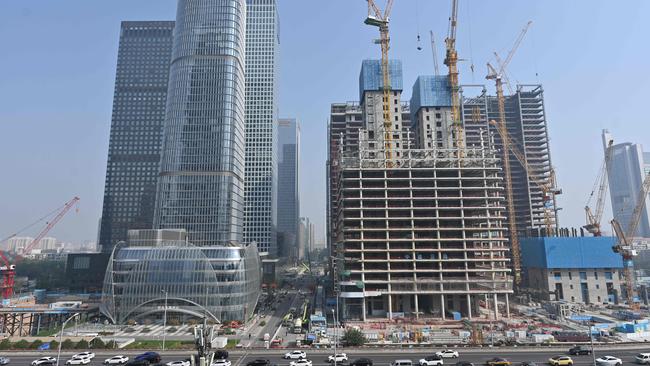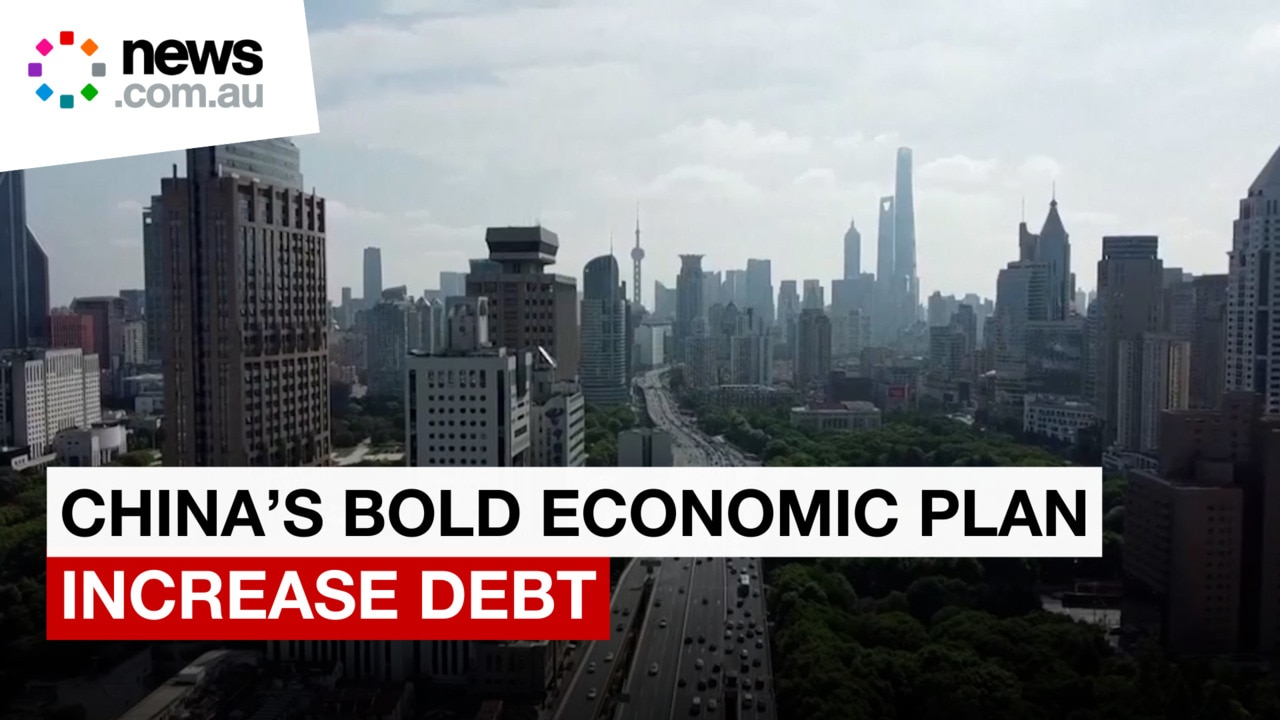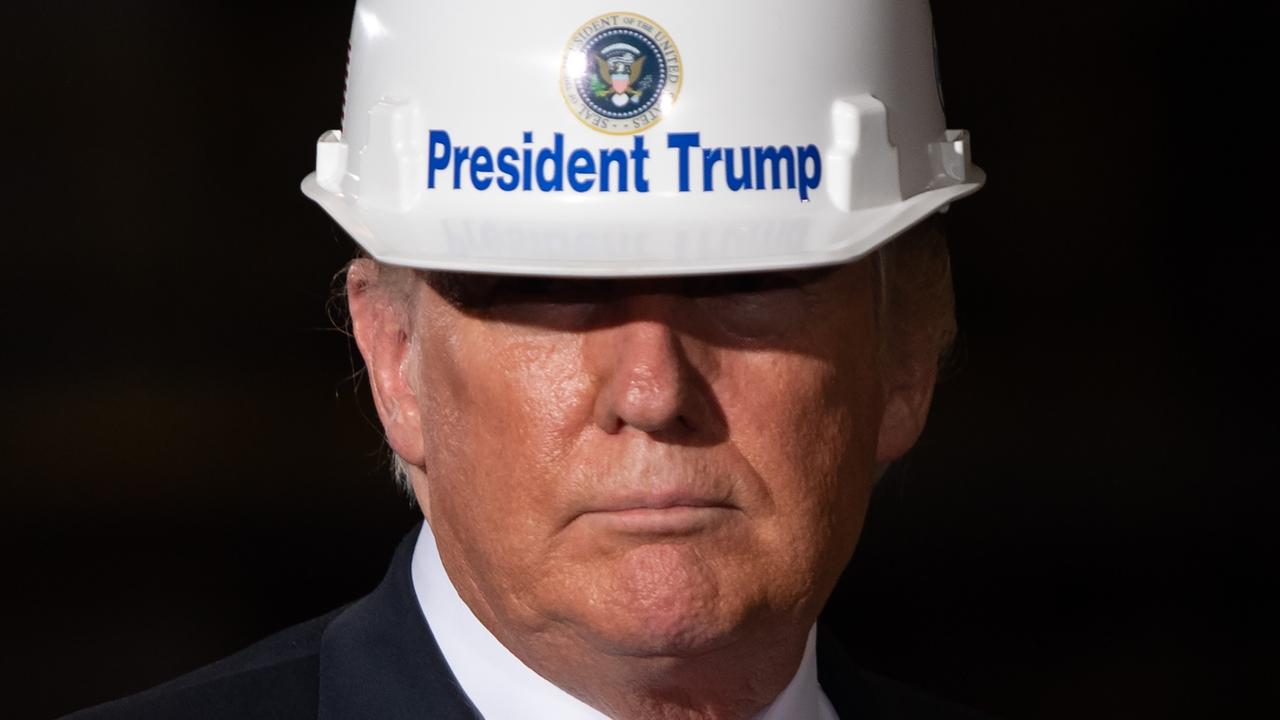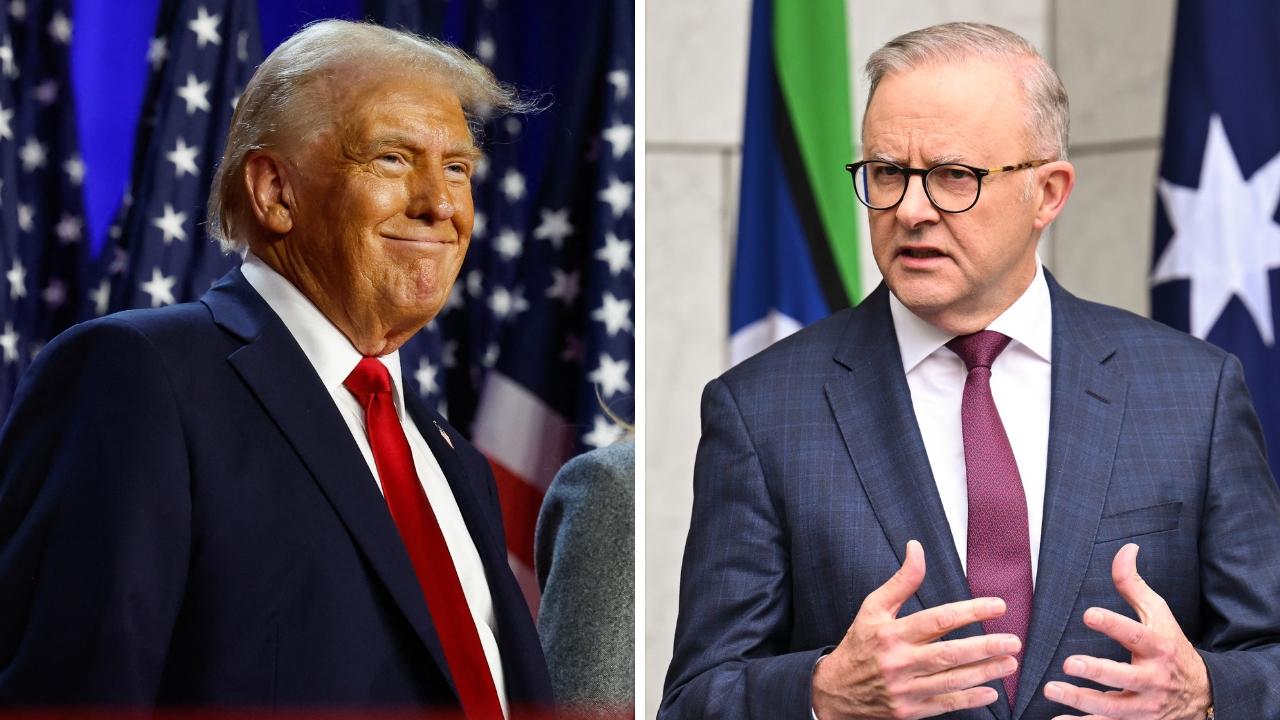Economists unconvinced as Beijing increases debt to fight woes
China says it will lift government debt to revive its economy but economists and investors were provided with little detail on the extent of the stimulus package.

China has pledged to lift government debt to boost its faltering economy but economists are unconvinced it will be enough to end the country’s deflationary streak.
Finance Minister Lan Foan on Saturday local time told a press conference in Beijing that the country still had room “to issue debts and increase the deficit” to fund new stimulatory measures but provided scant detail on the size of any stimulus package.
Instead, investors will have to wait at least a few weeks for more information on how much Beijing is prepared to pump into government debt to shore up the economy.
Mr Lan on Saturday said the government was “accelerating the use of additional treasury bonds, and ultra-long-term special treasury bonds are also being issued for use”.
“In the next three months, a total of 2.3 trillion yuan ($482bn) of special bond funds can be arranged for use in various places,” he added.
On top of that, Beijing also plans to “issue special government bonds to support large state-owned commercial banks,” Mr Lan said, although he did not say how much.
The move is part of a series of actions undertaken by Beijing to draw a line under a years-long property sector crisis and chronically low consumption that has plagued the world’s second biggest economy.
Beijing’s planned special bonds are aimed at boosting the capital available to banks — part of a push to get them lending in the hopes of firing up sluggish consumer spending.

But CommSec senior economist Ryan Felsman said economists were unconvinced it would be enough to revive the sluggish economy, as he pointed to the lack of detail in Saturday’s announcement.
“China moved to further ramp up support for its economy, promising more aid for its slumping property sector and indebted local governments, but officials still haven’t convinced economists they’re doing enough to defeat deflation,” Mr Felsman said.
“We had some fairly weak inflationary numbers released out of China on Sunday, with prices rising less than expected in September, and producer prices falling now for 24 straight months. So clearly, more needs to be done to support the economy, particularly on the consumption side,” he added. In terms of the stimulus measures announced, the briefing lacked detail on the immediate steps to lift demand, Mr Felsman said.
“Finance Minister Lan refrained from putting a price tag on China’s fiscal stimulus, and that’s kind of what investors were hoping for. So it really did lack details. Again, he did announce some supportive measures but gave little indication that China’s authorities feel any urgency to ramp up consumption.”
Investors should be provided additional detail on the stimulus package later this month, when the Standing Committee of the National People’s Congress meets.
The latest pledge from Beijing to boost the Chinese economy will likely have a limited impact on the Australian sharemarket on Monday, with investors instead taking their cue from the US markets’ performance on Friday.
SPI Futures are pointing to a 0.6 per cent lift at the open on Monday with gold and iron ore miners among those likely to see gains. It comes after US sharemarkets ended Friday’s session firmly in positive territory, with the Dow up 1 per cent, the S&P 500 gaining 0.6 per cent and the Nasdaq rising 0.3 per cent.
Shares in JPMorgan Chase jumped more than five per cent after the bank reported lower profits which nevertheless topped estimates, with executives saying the economy was poised to avoid a recession. Mr Felsman said risk sentiment was still in place as inflation continued to ease.
Gold miners should rise in Monday’s trade following gains in the gold price at the end of last week, he said.
This was on the back of gold futures price rising on Friday by 1.4 per cent to $US2676.30 an ounce on expectations the US Federal Reserve will cut rates in February. The spot price of gold last traded at $US2656.78 an ounce.
On the data front, labour market figures due out on Thursday will be closely watched as investors await the Reserve Bank’s November rate-setting meeting.
Additional reporting: AFP




